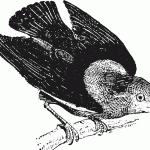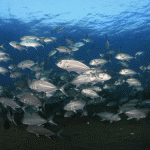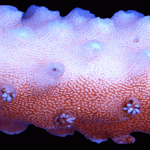Mother snow leopards and their cubs have been filmed in their den in Mongolia’s Tost Mountains for the first time.
Snow leopards are elusive by nature and live 3,000 to 5,500 metres above sea level in Central Asia, earning them the name Asia’s Mountain Ghost. This makes it a serious challenge for researchers to study them — most of what we know is the result of observation of these big cats in zoos and there is very little information about cub rearing, litter size and survival in the wild.
Scientists from Panthera and the Snow Leopard Trust have now been able to visit two dens in Mongolia’s Tost Mountains for the first time. They had been tracking two females, Anu and Lasya, using GPS collars, and when both cats had cubs, they were able to pay them a visit.
While they were there, PhD student Orjan Johansson managed to record the first video of Anu and her cub bedded down inside one of them using a camera on a pole. He was also able to capture some footage of the other den, which contained Lasya’s two cubs, while she was out hunting.
“This is the first documented visit of a den site with cubs and thanks to this video we can share it with the world,” says Brad Rutherford, Executive Director of the Snow Leopard Trust.
While Anu and Lasya were both out hunting, the researchers were able to enter the dens and weigh the three cubs. Two of the cubs were fixed with tiny microchip tags under their skin so the researchers can identify them in future and monitor when they first leave their dens, how often the mothers leave them alone to go hunting and how many cubs are born in the wild.
“We have spent years trying to determine when and where snow leopards give birth, the size of their litters, and the chances a cub has of surviving into adulthood,” says Dr Tom McCarthy, executive director of Panthera’s Snow Leopard Program. “This is one of those exceptional moments in conservation where after years of effort, we get a rare glimpse into the life of an animal that needs our help in surviving in today’s world.”
The researchers took great care in handling the cubs and monitored the mother’s locations over the next few days to make sure they returned to their dens.
Source: Panthera, Snow Leopard Trust






